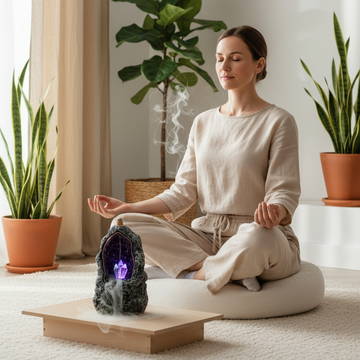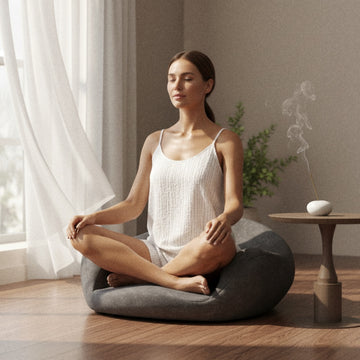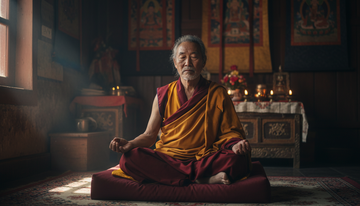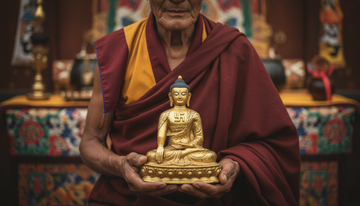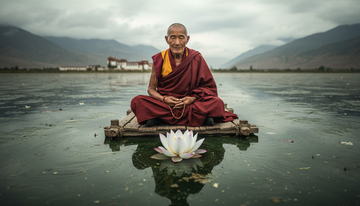When you think of meditation, what's the first image that comes to mind? For many, it's a seasoned practitioner sitting perfectly still, legs twisted into a complex lotus position. This stereotype can be incredibly intimidating for beginners, leading them to think, "My body is too stiff, I can't even cross my legs like that. Is meditation not for me?"
Let's debunk this myth once and for all: You absolutely do not have to force yourself to sit cross-legged to meditate.
In reality, the ideal meditation posture has only one golden rule: it should allow you to keep your spine naturally straight and your mind alert, while your body remains comfortable. Any position that causes sharp pain or numbness will only serve as a distraction, defeating the very purpose of meditation.
Let's explore several common meditation postures. You are sure to find one that feels right for you.
1. Seated Meditation
This is the most common approach. The key objective is to maintain a naturally erect spine.
A. Meditating in a Chair
This is the most highly recommended posture for beginners and anyone with physical limitations, such as knee or hip issues.
-
How to do it: Choose a chair where you can place both feet flat on the floor. Scoot forward slightly so your back isn't slumped against the chair back. Keep your spine straight but relaxed, and rest your hands on your thighs.
-
Benefits: It's incredibly accessible, requires minimal flexibility, and can be done anywhere, even at the office.
-
Best for: Everyone, especially beginners, office workers, and those with joint stiffness.

B. Meditating on a Cushion
If you want to try a more traditional floor-sitting posture, a good meditation cushion (zafu) is essential. A cushion elevates your hips, allowing your knees to drop below them, which makes it much easier to maintain a straight spine.
-
Burmese Position: The simplest cross-legged style. Both legs are crossed, and both ankles rest comfortably on the floor, one in front of the other.
-
Half-Lotus: One foot is placed on the opposite thigh. This requires a bit more hip flexibility.
-
Seiza (Kneeling): Kneel on the floor and rest your buttocks on your heels. For added comfort, place a cushion under your seat and/or knees.
Important Tip: In any floor posture, if you feel pain in your knees or ankles, adjust immediately or switch back to a chair. Pain is not a prerequisite for progress in meditation.
2. Lying Down Meditation
Who says you have to be sitting up? Lying down is a fantastic option, especially for pre-sleep relaxation or body scan meditations.
-
How to do it: Lie flat on your back on a yoga mat or carpet. Let your legs fall apart naturally and rest your arms by your sides, palms facing up. To avoid falling asleep, you can bend your knees and place your feet flat on the floor.
-
Benefits: Allows for complete physical relaxation with zero pressure on the spine.
-
Heads-up: This position makes it very easy to fall asleep! If you find yourself drifting off consistently, try practicing at a different time of day or switch back to a seated posture.
3. Dynamic Meditation
Meditation can also be active. Walking meditation is a great example.
-
How to do it: Find a quiet space with a clear path (like a hallway or a park trail). Walk at a very slow, deliberate pace. Bring your full attention to the sensation of your feet connecting with the ground—the lifting, moving, and placing of each foot.
-
Benefits: Helps integrate mindfulness into everyday activities and is perfect for activating the body after long periods of sitting.
Conclusion: Comfort is Key
Don't let the "I must sit cross-legged" myth be a barrier on your path to mindfulness.
The essence of meditation is to train the mind, not to torture the body. Starting today, choose a posture that feels stable and comfortable for you—whether it's in a supportive chair or on a soft cushion. When your body is at ease, your mind is free to begin the real, wonderful journey of inner exploration.



